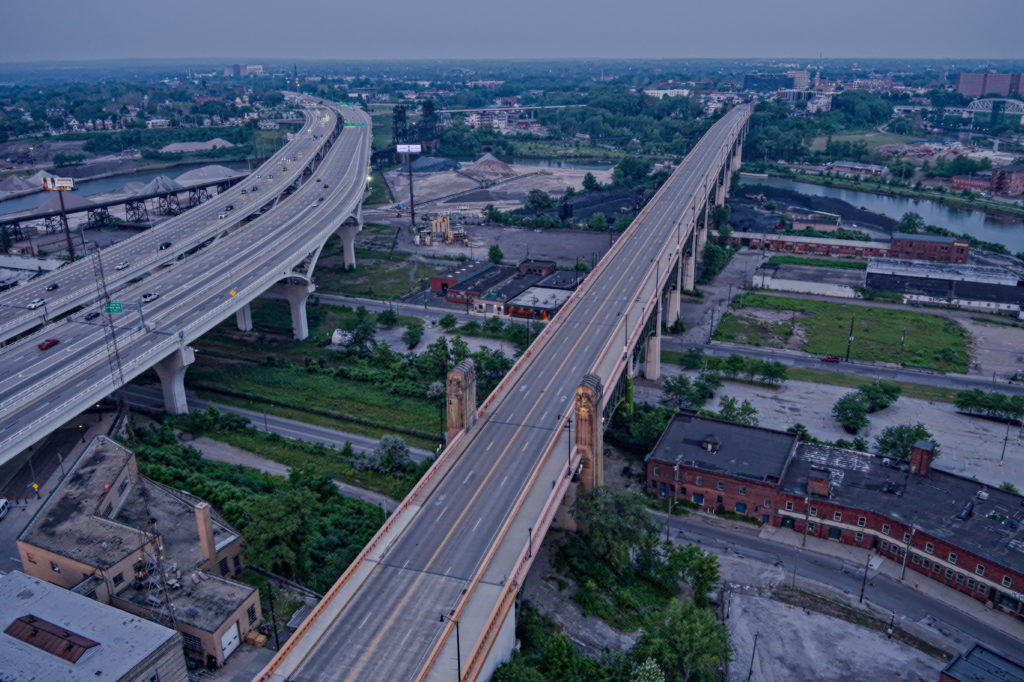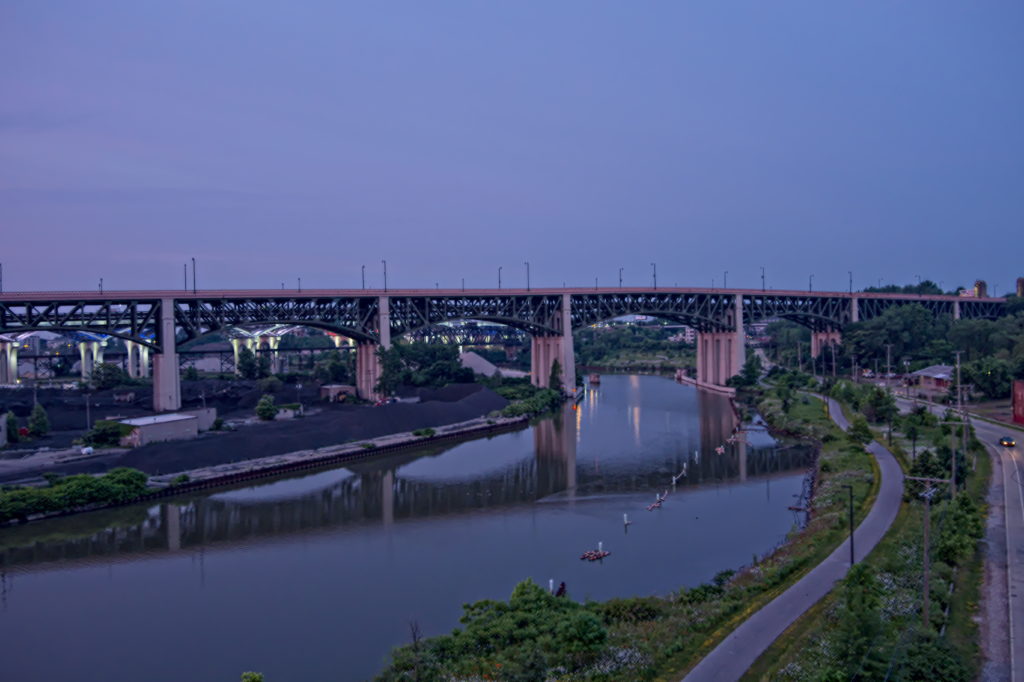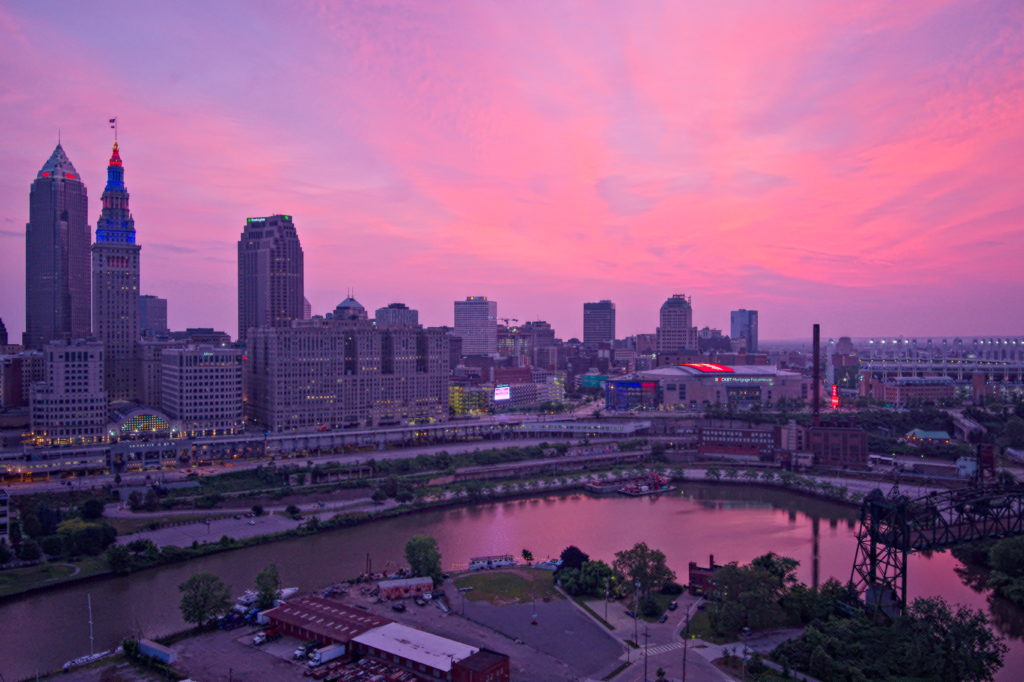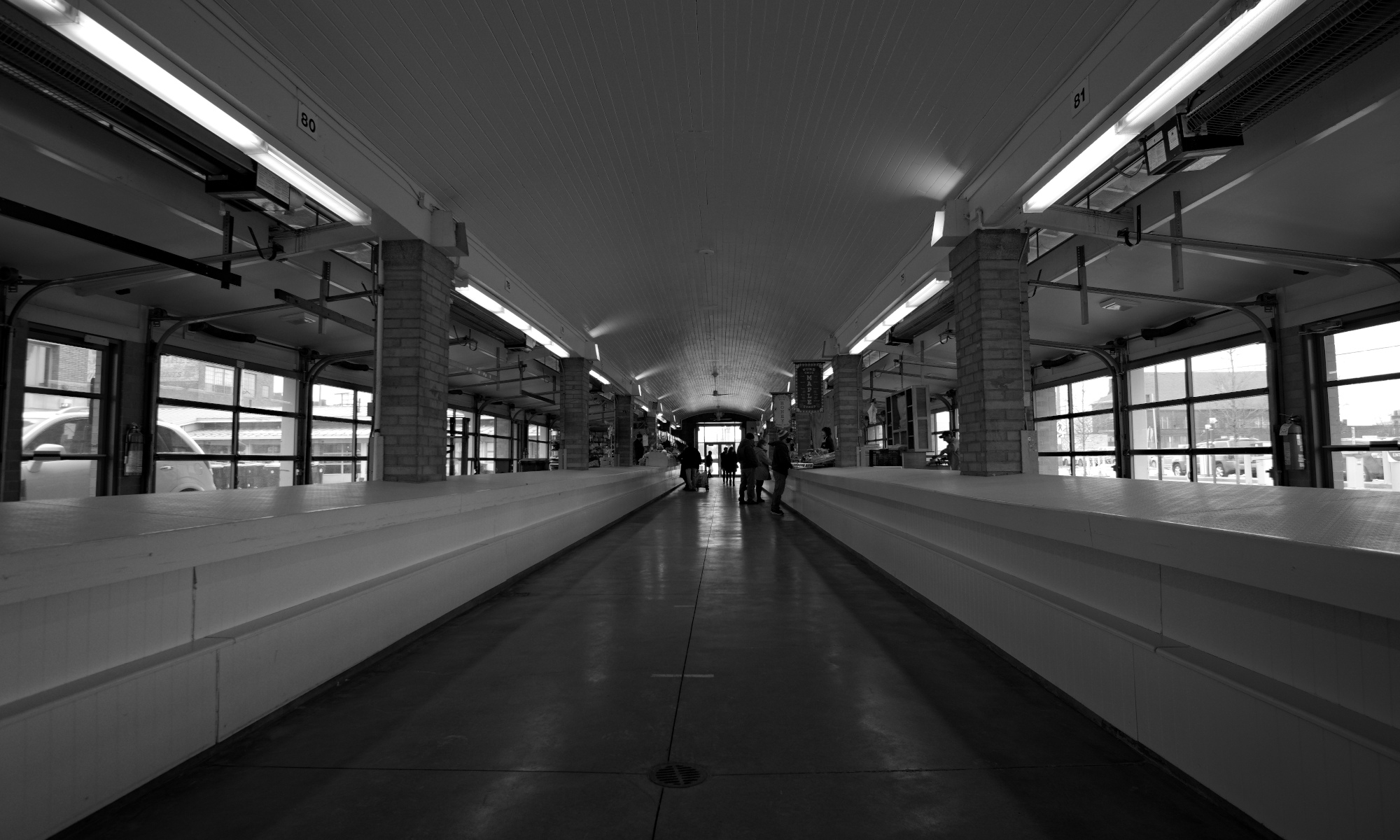DRONE PHOTOS of Bridges In Cleveland Ohio
Cleveland, Ohio boasts a magnificent network of bridges that span the Cuyahoga River and connect the various neighborhoods and regions of this vibrant city. Among these architectural marvels are the iconic lift bridges that gracefully rise to accommodate passing vessels on the river. In this blog post, we will explore the history, significance, and charm of Cleveland’s bridges, highlighting the unique beauty and functionality of its lift bridges.
Cleveland’s bridge-building legacy dates back to the early 19th century when the city experienced rapid growth and the need for transportation infrastructure became paramount. The first bridge, aptly named the Superior Viaduct, was constructed in 1858 and marked the beginning of a new era. Since then, Cleveland has witnessed the evolution of bridge design, with each structure reflecting the prevailing architectural styles of its time.


Eagle Avenue Lift Bridge (closed, scheduled for demolition)
The Eagle Avenue Lift Bridge, situated in the Flats district of Cleveland, carries its weighty heritage dating back to 1931. It spans 216 foot over the Cuyahoga River. The bridge is a vertical lift, Pennsylvania Through Truss style bridge with a slight incline.


The Lorain Carnegie Bridge aka The Hope Memorial Bridge


